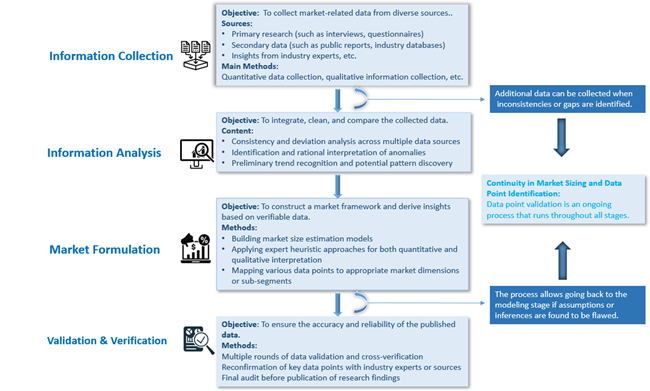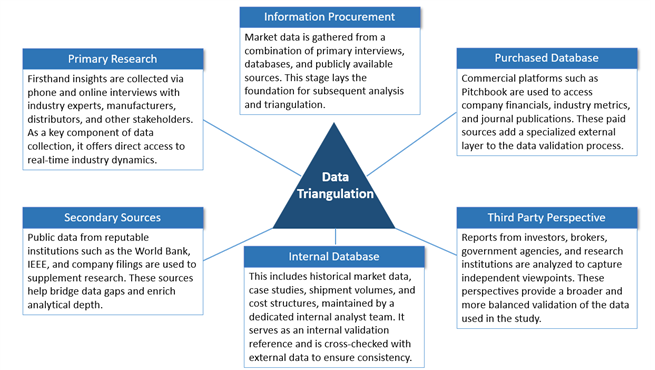Electronic Wet Chemicals refer to chemical reagents with a purity greater
than 99.99%, used in wet processes such as wet etching, cleaning, developing,
and stripping. These liquid chemical materials are primarily applied in the
integrated circuit (IC), photovoltaic (PV) panel, and display panel industries.
Ultra-pure reagents, internationally known as Process Chemicals, are referred
to as Wet Chemicals in the United States, Europe, and Taiwan. Their purity and
cleanliness are critically important for the yield, electrical performance, and
reliability of electronic components.
The upstream of the Electronic Wet Chemicals industry is the basic
chemical industry, using bulk chemical commodities as raw materials, while the
downstream is the electronic information industry, with primary applications in
integrated circuits, display panels, and solar photovoltaics. WECs occupy a key
position in the upstream of the electronic information industry chain and play
an important role in its development.
Market Overview:
According to LookWhole Insight, the global Electronic Wet Chemical market is projected to reach USD 5948.61 Million in 2024. It is expected to grow to USD 9492.59 Million by 2033, registering a compound annual growth rate (CAGR) of 5.33% during the forecast period (2025–2033). - LookWhole Insight
According to composition and application process, Electronic Wet Chemicals are divided into general-purpose Type and functional Type:
General-purpose Type are typically single-component, single-function, ultra-pure reagents widely used in wet processes such as cleaning and developing. They include acids (sulfuric acid, phosphoric acid, hydrofluoric acid, hydrochloric acid, nitric acid, etc.), bases (ammonia solution, sodium hydroxide, potassium hydroxide, etc.), organic solvents (methanol, ethanol, isopropanol, acetone, ethyl acetate, etc.), and other chemicals such as hydrogen peroxide.
Functional Type are blended chemicals designed to achieve specific functions and meet unique process requirements. They are made by adding one or more compounds—such as water, organic solvents, chelating agents, or surfactants—to single or multiple ultra-pure reagents and mixing them. Examples include cleaning agents, developers, strippers, etchants, diluents, and regenerants.
The following are the main product categories for electronic wet chemicals:
|
Category |
|
Type |
Specific Products |
|
General-Purpose Type |
Acids |
Hydrofluoric acid, sulfuric acid, hydrochloric acid, nitric acid, acetic acid, phosphoric acid |
|
|
Bases |
Ammonia solution, sodium hydroxide, potassium hydroxide, ammonium fluoride, tetramethylammonium hydroxide |
||
|
Organic Solvents |
Alcohols |
Methanol, ethanol, isopropanol |
|
|
Ketones |
Acetone, butanone, methyl isobutyl ketone, N-methylpyrrolidone |
||
|
Esters |
Ethyl acetate, butyl acetate, isopentyl acetate, propylene glycol monomethyl ether acetate |
||
|
Ethers |
Propylene glycol monomethyl ether |
||
|
Hydrocarbons |
Toluene, xylene, cyclohexane |
||
|
Halogenated Hydrocarbons |
Trichloroethylene, trichloroethane, chloromethane, carbon tetrachloride |
||
|
Others |
Hydrogen peroxide |
||
|
Functional Type |
Etchants |
Metal etchants, BOE etchants, ITO etchants |
|
|
Cleaning Agents |
General cleaning solutions, metal ion removal solutions, particle removal solutions |
||
|
Photoresist Auxiliary Reagents |
Thinners, Developers, Strippers, Strip Cleaners |
||
A Typical Technology-Intensive Industry With High Barriers To Entry
Electronic Wet Chemicals (EWCs) are widely applied and require advanced technical standards, as well as stringent demands on products and supply systems, making the industry a typical technology-intensive sector. The barriers to entry in this industry mainly manifest in three areas: technological barriers, certification barriers, and talent barriers. Additionally, capital, market, and qualification barriers also contribute to the industry’s entry threshold.
|
Category |
Details |
|
Technological Barrier |
The electronic wet chemicals industry has high process requirements for product quality and purity. Manufacturers must master core technologies including product preparation, product testing, and handling of packaging materials and valves, as well as effectively control impurity levels during production, creating a high technical threshold. |
|
Certification Barrier |
As a critical material, the quality of electronic wet chemicals significantly affects downstream production. For highly precise downstream industries such as very large-scale integrated circuits and advanced display panels, suppliers are selected with extreme caution and strict standards. |
|
Talent Barrier |
The chemical materials industry is multidisciplinary and knowledge-intensive, covering chemistry, electronics, materials science, physics, and chemical engineering. It requires a large pool of comprehensive talent. Training cycles are long, and personnel must continuously improve experience and skills during R&D and production. New entrants find it difficult to quickly build professional, mature, and versatile teams, making talent accumulation a significant challenge. |
|
Capital Barrier |
The industry is capital-, technology-, and talent-intensive. Rapid development requires substantial investment in plant facilities, equipment, and R&D, and labor costs for specialized personnel continue to rise. High capital requirements constitute a major entry barrier. |
|
Market Barrier |
Most downstream customers are specialized manufacturers rather than end consumers, making it difficult to establish brand recognition through conventional marketing in a short period. Customer trust in product quality, brand, and service is built through long-term collaboration. |
|
Qualification Barrier |
Most electronic wet chemicals are classified as hazardous, controlled precursor, or explosive precursor chemicals, requiring production and safety licenses. This creates high qualification barriers for potential competitors. |
Key Development Trends
Product standards for EWCs vary across downstream applications. In the display panel sector, EWC grade requirements are generally concentrated at G2–G3. For IC process EWCs, the purity requirement is higher, generally G3 or above, and the larger the wafer size, the stricter the purity standard; for 12-inch wafers, G4 is typically required. As IC process nodes continue to advance, the demand for higher-purity EWCs increases, with the proportion of G4–G5 grade EWCs expected to rise.
SEMI standards for EWCs are as follows:
|
SEMI Grade |
IC Process Range (µm) |
Metal Impurities (µg/L) |
Particle Size Control (µm) |
Particle Count (pcs/ML) |
Main Downstream Applications |
|
G1 |
>1.2 |
≤100 |
≤1.0 |
≤25 |
Discrete devices, solar photovoltaics |
|
G2 |
0.8–1.2 |
≤10 |
≤0.5 |
≤25 |
Discrete devices, display panels, LED |
|
G3 |
0.2–0.6 |
≤1 |
≤0.5 |
≤5 |
Integrated circuits |
|
G4 |
0.09–0.2 |
≤0.10 |
≤0.20 |
Negotiated by both parties |
Integrated circuits |
|
G5 |
<0.09 |
≤0.01 |
Negotiated by both parties |
Negotiated by both parties |
Integrated circuits |
As IC integration levels rise, feature sizes shrink, and repetitive steps increase, the amount of EWCs used in wafer manufacturing grows exponentially. A 12-inch wafer has twice the area of an 8-inch wafer, but its EWC usage reaches 239.82 tons per 10,000 wafers, which is 4.6 times that of 8-inch wafers and 7.9 times that of 6-inch wafers.
Summary of EWC unit consumption for different wafer sizes:
|
Chemical / Material |
Consumption per 12-inch Wafer (tons/10k wafers) |
Consumption per 8-inch Wafer (tons/10k wafers) |
Consumption per 6-inch Wafer (tons/10k wafers) |
|
Electronic Wet Chemicals |
78.35 |
8.67 |
5.62 |
|
Hydrogen Peroxide |
75.47 |
15.78 |
9.47 |
|
Sulfuric Acid |
22.56 |
6.76 |
3.80 |
|
Ammonia Solution |
20.50 |
3.54 |
2.12 |
|
Etching Solution |
15.85 |
1.35 |
– |
|
Hydrofluoric Acid |
12.85 |
3.06 |
1.84 |
|
Nitric Acid |
12.59 |
– |
– |
|
Hydrochloric Acid |
1.65 |
0.13 |
0.08 |
|
Isopropyl Alcohol |
5.36 |
3.22 |
– |
|
Stripping Solution |
3.35 |
2.01 |
– |
|
Buffered Oxide Etchant (BOE) |
2.55 |
1.53 |
– |
|
Phosphoric Acid |
1.38 |
0.83 |
– |
|
Total |
239.82 |
51.93 |
30.52 |
It is estimated that OLED monitor shipments will grow by 80% in 2025, increasing their penetration in the overall monitor market to 2%, with potential to reach 5% by 2028. OLED technology, with its advantages of self-emission, high contrast, and thinness, continues to expand its market share, mainly in small-size applications like mobile phones. In large-size markets, adoption is slower due to cost and capacity limitations. Meanwhile, the mid-size market—monitors, laptops, tablets, and automotive displays—is seeing a new competitive cycle as consumers pursue higher display quality.
As OLED panel production capacity gradually increases, the demand for EWCs in display panel manufacturing is expected to continue growing.
Among EWCs used in PV cell manufacturing, hydrofluoric acid, nitric acid, and potassium hydroxide are the most consumed. Depending on the texturing and cleaning process—alkaline texturing for monocrystalline silicon wafers and acidic texturing for polycrystalline silicon wafers—monocrystalline wafers require more potassium hydroxide, while polycrystalline wafers consume more hydrofluoric acid and nitric acid.
Global Electronic Wet Chemical Market: Competitive Landscape
Currently, the global wet chemical market is primarily divided into three tiers: Traditional, established European and American companies hold approximately 30% of the market share. Representative companies include Germany's BASF and Merck, and the United States' DuPont and Intergold. These companies have a long history, a comprehensive product range, and global production bases. They possess significant technological advantages, with products reaching SEMI G4 (metal impurities less than 0.1µg/L) and above. Japanese companies also hold approximately 30% of the market share, primarily including Kanto Chemical, Mitsubishi Chemical, and Ruixing Chemical, whose technological level is comparable to that of European and American companies. South Korean, Taiwanese, Chinese mainland, and other Asian companies collectively hold approximately 40% of the market share. Korean and Taiwanese companies, such as Dongjin Semicon and Kanto Xinlin, have certain advantages in production technology and are comparable in competitiveness to their European, American, and Japanese counterparts in the high-end market. Mainland Chinese companies, on the other hand, are still in the process of achieving technological breakthroughs.
Report Framework and Key Highlights:
Market Dynamics: Identification of major market drivers, restraints, opportunities, and challenges.
Trend Analysis: Examination of ongoing and emerging trends impacting the market.
Competitive Landscape: Detailed profiles and market positioning of major players, including market share, operational status, product offerings, and strategic developments.
Strategic Analysis Tools: SWOT Analysis, Porter’s Five Forces Analysis, PEST Analysis, Value Chain Analysis
Market Segmentation: By type, application, region, and end-user industry.
Forecasting and Growth Projections: In-depth revenue forecasts and CAGR analysis through 2033.
This report equips readers with critical insights to navigate competitive dynamics and develop effective strategies. Whether assessing a new market entry or refining existing strategies, the report serves as a valuable tool for:
Industry players
Investors
Researchers
Consultants
Business strategists
And all stakeholders with an interest or investment in the Electronic Wet Chemical market.
Global Electronic Wet Chemical Market: Segmentation Analysis and Strategic Insights
This section of the report provides an in-depth segmentation analysis of the global Electronic Wet Chemical market. The market is segmented based on region (country), manufacturer, product type, and application. Segmentation enables a more precise understanding of market dynamics and facilitates targeted strategies across product development, marketing, and sales.
By breaking the market into meaningful subsets, stakeholders can better tailor their offerings to the specific needs of each segment—enhancing competitiveness and improving return on investment.
Global Electronic Wet Chemical Market: Market Segmentation Analysis
The research report includes specific segments by region (country), manufacturers, Type, and Application. Market segmentation creates subsets of a market based on product type, end-user or application, Geographic, and other factors. By understanding the market segments, the decision-maker can leverage this targeting in the product, sales, and marketing strategies. Market segments can power your product development cycles by informing how you create product offerings for different segments.
|
ATTRIBUTE |
Details |
|
|
Time Coverage |
Historical Year: 2020– 2024 Base Year: 2024 Estimated Year: 2025 Forecast Year: 2025 - 2033 |
|
|
Market Segmentation |
||
|
By Type |
General-Purpose Type Functional Type |
|
|
By Application |
Integrated Circuits Display Panels Solar Photovoltaics Others |
|
|
By Company |
BASF Honeywell Mitsubishi Chemical Sumitomo Chemical Merck KGaA Entegris Kanto Chemical Stella Chemifa Tokuyama Corporation Lithionics Toyo Chemical Ruixing Chemical Dongjin Semichem Soulbrain Jianghua Microelectronics GrindChem Jiangyin Runma Jingrui Electronic Materials Sinomicro Shanghai Sinyang PhiChem Corporation Capchem |
|
|
By Region |
North
America |
|
Report Framework and Chapter Summary
Chapter 1: Report Scope and Market Definition
This chapter outlines the statistical boundaries and scope of the report. It defines the segmentation standards used throughout the study, including criteria for dividing the market by region, product type, application, and other relevant dimensions. It establishes the foundational definitions and classifications that guide the rest of the analysis.
Chapter 2: Executive Summary
This chapter presents a concise summary of the market’s current status and future outlook across different segments—by geography, product type, and application. It includes key metrics such as market size, growth trends, and development potential for each segment. The chapter offers a high-level overview of the Electronic Wet Chemical Market, highlighting its evolution over the short, medium, and long term.
Chapter 3: Market Dynamics and Policy Environment
This chapter explores the latest developments in the market, identifying key growth drivers, restraints, challenges, and risks faced by industry participants. It also includes an analysis of the policy and regulatory landscape affecting the market, providing insight into how external factors may shape future performance.
Chapter 4: Competitive Landscape
This chapter provides a detailed assessment of the market's competitive environment. It covers market share, production capacity, output, pricing trends, and strategic developments such as mergers, acquisitions, and expansion plans of leading players. This analysis offers a comprehensive view of the positioning and performance of top competitors.
Chapters 5–10: Regional Market Analysis
These chapters offer in-depth, quantitative evaluations of market size and growth potential across major regions and countries. Each chapter assesses regional consumption patterns, market dynamics, development prospects, and available capacity. The analysis helps readers understand geographical differences and opportunities in global markets.
Chapter 11: Market Segmentation by Product Type
This chapter examines the market based on product type, analyzing the size, growth trends, and potential of each segment. It helps stakeholders identify underexplored or high-potential product categories—often referred to as “blue ocean” opportunities.
Chapter 12: Market Segmentation by Application
This chapter analyzes the market based on application fields, providing insights into the scale and future development of each application segment. It supports readers in identifying high-growth areas across downstream markets.
Chapter 13: Company Profiles
This chapter presents comprehensive profiles of leading companies operating in the market. For each company, it details sales revenue, volume, pricing, gross profit margin, market share, product offerings, and recent strategic developments. This section offers valuable insight into corporate performance and strategy.
Chapter 14: Industry Chain and Value Chain Analysis
This chapter explores the full industry chain, from upstream raw material suppliers to downstream application sectors. It includes a value chain analysis that highlights the interconnections and dependencies across various parts of the ecosystem.
Chapter 15: Key Findings and Conclusions
The final chapter summarizes the main takeaways from the report, presenting the core conclusions, strategic recommendations, and implications for stakeholders. It encapsulates the insights drawn from all previous chapters.
About US
LookWhole Insight is a global leader in data analytics and market research, offering deep insights into industries, economies, and consumer behavior across the world. We deliver comprehensive data and analysis on thousands of products and services, making us the first choice for organizations pursuing growth and exploring untapped, blue ocean markets.
Our offerings include syndicated research reports, customized research solutions, and strategic consulting services. The LookWhole Insight database is trusted by prestigious academic institutions and Fortune 500 companies alike, providing a robust foundation to navigate both global and regional business environments. Our data spans 26 industries across 35 key economies, backed by thousands of metrics and detailed analyses.
As an independent provider of global business intelligence, we empower clients with market analysis and consumer insights that range from local to global, and from tactical to strategic. Our research solutions guide critical decisions on when, where, and how to scale your business with confidence.
Email: market@lookwhole.com
www.lookwholeinsight.com






